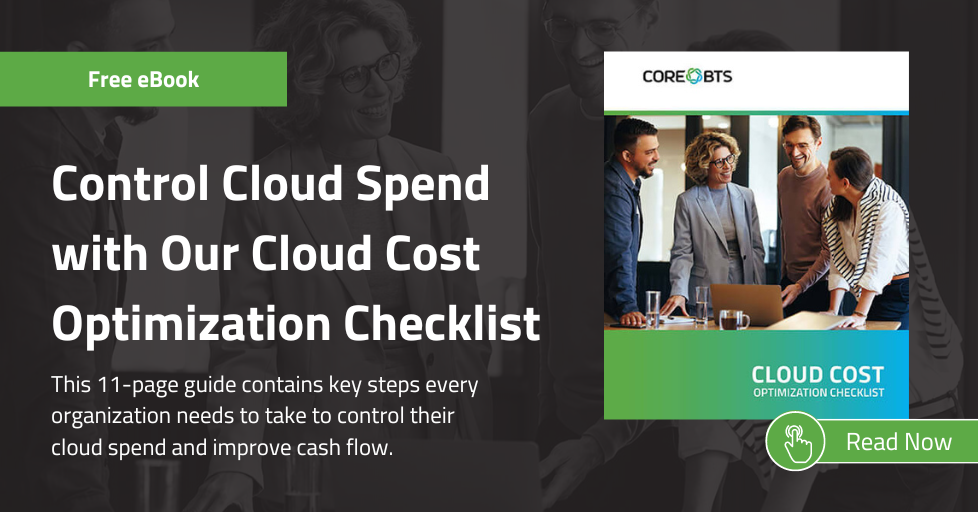The cloud made app development, data management, storage, and computing faster and easier – but now bills are coming due. And they’re not pretty. But we know it doesn’t have to be this way. You can stop the sprawl with CoreStratus – an Azure Cloud Cost Optimization and Financial Governance Solution from Core BTS.
Governance is crucial for cloud cost optimization because it provides a framework for managing resources, controlling costs, and ensuring compliance with organizational policies and regulations. Without establishing governance, it will be challenging to understand how resources are being utilized and to identify opportunities for optimization.
3 Ways Governance Helps You Achieve Cost Optimization
1. Establishing Policies and Procedures for Resource Allocation
Governance policies can help ensure that cloud resources are allocated efficiently and effectively, with a focus on cost optimization. For example, policies might require approval for new resource requests, or establish guidelines for resource allocation based on business needs.
2. Monitoring Usage and Costs
Governance procedures can help organizations monitor cloud usage and costs in real-time, enabling them to identify areas of waste or inefficiency and take action to address them. For example, by utilizing a resource tag (like “business owner”) you would know who to contact to determine if a cost spike was legitimate or an accident. This might involve using tools and technologies to track resource utilization and costs or establishing regular reporting and analysis processes.
3. Enforcing Compliance with Policies and Regulations
Governance policies help ensure that cloud resources are properly tagged to comply with organizational policies and regulations. For highly regulated industries, doing so can reduce the risk of fines or other penalties.
Creating Your Tag Governance Policy
Tag governance policies are an important part of cloud cost optimization because they provide visibility and detailed insights into cloud usage, help identify cost optimization opportunities, prevent wasteful spending, and improve security. By implementing effective tag governance policies, you can make the most of your cloud resources while controlling costs.
Here are some of the tag governance policies we set up for our clients (and recommend you do as well):
Standardization
A clear and consistent approach to tagging should be established across your organization. This will help ensure that all resources are tagged consistently, making it easier to manage and optimize cloud resources.
Documentation
The policy should clearly define the purpose and use of each tag. This will help ensure that tags are used consistently and appropriately.
Training
Employees who work with cloud resources should be trained on how to use tags effectively. This will help ensure that tags are used consistently and that resources are properly tagged.
Review
Regular reviews of tag usage should be conducted to ensure compliance with the policy and to identify areas for improvement.
Enforcement
The policy should be enforced through automation and monitoring. This will help ensure that tags are used consistently and that resources are properly tagged.
Flexibility
The policy should be flexible enough to accommodate changes in the organization’s cloud environment. For example, new tags may need to be added as new cloud services are introduced.
Communication
The policy should be clearly communicated to all stakeholders, including employees, managers, and IT personnel. This will help ensure that everyone understands the importance of tagging and how to use tags effectively.
Conclusion
Overall, governance is a critical component of effective cloud cost optimization, enabling organizations to manage resources more efficiently, reduce waste, and ensure compliance with policies and regulations.







Share on